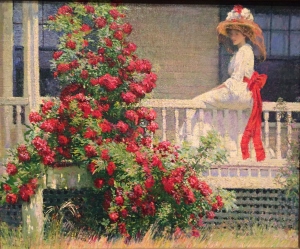The New York day was jammed – with heat, with tourists, with smells, and with action. Three museums, two plays, a movie, and a partridge…
Best of all though was walking the streets and letting New York happen.
Seeing “Skeleton Crew” by Dominique Morrisseau was brilliant enough in itself-so assuredly written and acted, characters thick with their (extra)ordinary struggles that transcend when put in Detroit in 2008. The genuine acknowledgement of the craft at its peak with sustained applause through two curtain calls. The wonder of discovering a gloriously talented playwright.
After, I had nowhere to be fast or slow. As I strolled out the door onto the sweltering street, I smiled at a woman sitting on her stoop (Atlantic is on a residential street in Chelsea), and she smiled.
A tiny women, all bent over, asked, “so how was it?”
“Excellent”…”so good,” a young man and I answered together.
“I’ll get my ticket,” she said tottering toward the theater.
The young man, so pretty and sweet and gay and put together, and I compared notes, admiring the playwright, whom he worked with when he first moved to the City. Turns out he’s 39, although he looked 23 at most, and an actor. Of course. We chatted amiably until parting for the next adventure.
I turned the corner, scanning for Blossom where I was planning to have a vegan burger with the onion ring and vegan bacon inside–crunchy and yummy by the way. I stopped in front of a movie theater playing “Love and Friendship.”
Nothing feels so good as the cinema on a really beastly day. Okay, I thought, I’ll just see what time it’s playing.
In 30 minutes. So I got a ticket, now involving selecting an exact seat.
“You have such beautiful diction,” commented the ticket sales woman.
“I narrate for the blind.”
“See there? I’m so smart. I just at knew it,” she said proudly, handing over my ticket as she peered over her cheaters with a smile.
I smiled right back, then went outside to find Blossom. The girl working as a greeter at the entrance to the theater looked with me across the street. “I don’t know it,” she mourned, throwing her hands up in resignation.
I went across the street anyway in search and found its tiny storefront camouflaged behind the only tree on the block.
After my burger, I found the same girl stationed by the door, and she seemed delighted I came back to report to her. We shared a moment about that tree.
The movie based on Jane Austen’s Lady Susan promised to be her most biting, with its true antiheroine. But alas it was unfinished, and the movie feels the same. Its sour cynicism is enormously amusing though.
After, even though the evening was still oppressively hot, I decided to walk the 20 blocks to the Broadway theater. Still in Chelsea, virtually everyone responded to my sparkly glasses and goofy grim with a smile right back. The tall, slim young man waiting for the 8th Ave bus, the bagel peddler, the barista selling iced, cold brew coffee.
My first sip exploded like a crunched, toasted coffee bean in my mouth, round, smooth, and strong. Was anything ever so delicious?
Of course, entering the Penn Station area, then Times Square, sobered me up fast, and I got back to people watching with my game face on. The two girls, all brown flesh and swagger, in their rainbow-colored, twisted balloon crowns. The three sailor boys in their Navy whites. Wait! One was a girl, her blonde hair braided and tucked under her cocked cap, and her thin, wire-rimmed glasses just cloaking her Times-Square-neon blue eyes. The long, sweaty lines of theater goers waiting for that first whoosh of theater-cold air and relief.
Summer in New York can be horrible, but its neighborhoods and people never are. The best part of any day.
Wonderful exhibits. I was captured by the shadows, creating new works of art.

Moholy-Nagy, Twisted Planes, plexiglass and steel, 1946 at the Guggenheim

Hellenistic Wrestlers at the Met

Zeus’ head and fist at the Met

Greek theatrical masks at the Met




















































































































